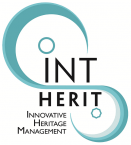Summary
Located in the heart of the historic city center of Cahors, the demonstrator building was created by fusing two adjoining buildings: one older on Saint James Street, the other more recent on Petit Mot Street. These two buildings, originally built in the 13th-14th centuries, have been remodeled over time. However, they are dilapidated and have been vacant for many years.
The objective of the rehabilitation is to improve the building’s energy efficiency while preserving its historical and architectural interest. The aim is to offer a comfortable and qualitative housing for future occupants.
Reconciling a high-performance thermal renovation with the rehabilitation of a historical building requires a specific and innovative approach. The use of suitable ecological materials, targeted technical interventions to avoid altering existing structures, and the study of the hygrothermal behavior of buildings are key to the success of this project.
Once the rehabilitation has been completed, the residents will participate in the evaluation of the project by identifying any dysfunctions and suggesting improvements.
Solutions offered
The 2 joined buildings (each with 4 stages) will have a floor area of ??approximately 300 m2. The project consists of renovating the building and creating three spaces:
– On the ground floor and the 1st floor: a tertiary space (offices). Part of this space could be dedicated to informing inhabitants about eco-renovation approaches;
– On the 2nd floor: a one-bedroom apartment that could accommodate a student or a researcher (in the field of historical preservation or energy efficiency) who would be in charge of processing the data from the monitoring system and analyzing the results.
– On the 3rd and 4th floors: a three-bedroom duplex apartment that could suit a family that wants to settle in the city center.
The approach will:
– Develop a usager-focused approach to meet the expectations and needs of future occupants. The rehabilitation will improve the quality of living conditions and adapt the housing to the needs of current lifestyles (housing functionality, additional spaces, terrace…).
– Promote the local production of eco-renovation materials. The renovation of the building will test the use of eco-materials that can be produced locally, including various times of insulating plasters (lime-hemp, lime-sand, rigid and semi-rigid wood fiber) as well as woodwork (windows, doors) made out of local wood.
– Establish “a permit to do”, in other words, to take a different approach to restoring historical buildings by transforming historical renovation regulations into assets and testing new methods or techniques.
– Improve energy efficiency while respecting and preserving historical interest. Renovations must improve the comfort of residents, significantly reduce energy consumption while preserving the historical elements that give the downtown area its charm and character.
– Improve knowledge of the thermal behavior of different building materials and constructions as well as on uses and energy management. The hygrothermal behavior as well as the energy consumption of the building will be analyzed thanks to suitable measurement sensors.
Building on the sustainable and integrated approach
Through the ENERPAT project and the rehabilitation of the demonstrator building, the Grand Cahors Agglomeration wishes to develop a regional cluster on its territory, on the theme of the rehabilitation of historic buildings. It is a collective approach that brings together various actors in the fields of vocational training, research, construction and historical preservation, among others, from the creation of the cluster to its operation.
ENERPAT is fully committed to achieving the objectives set by the Occitanie Region, which wants to become the first energy-positive region in Europe. The project is also part of the Cahors, the Heart of the Agglomeration urban strategy, whose goal is to rebuild a vibrant city center, welcoming new inhabitants and diverse economic activities in a preserved, modernized and secure environment.
Based on a participatory approach
The project is innovative in its methodology that promotes a shared approach among all stakeholders involved in construction to develop territorial value chain around the eco-renovation of historical buildings. Workshops were held before the start of the renovation with various actors (craftsmen, project manager, programmers, laboratory) to collectively select the materials to be tested. Site visits with artisans will be organized in Spring 2019.
In addition, future occupants will be involved in the project. Residents will be interviewed regularly concerning their comfort and the quality of their housing. The aim is to integrate their point of view on the ease of housing maintenance, accessibility, services, comfort (hygroscopic, acoustic).
What difference has it made? How did the result indicator shift?
The renovation is still in progress.
By combining the two small buildings, the new building will offer larger and more comfortable living spaces. The project will reconstruct a large medieval arch on the ground floor on Saint James Street to open the building on the street and bring light inside. The top floor will be an opportunity to open the living spaces onto a view of the rooftops of Cahors.
Why should other EU cities use it?
The aim of the ENERPAT project is to propose a set of recommendations for eco-renovation techniques and energy-efficient materials that are both architecturally and economically adapted to the renovation of residential buildings in historic centers.
The results of this project, as well as the recommendations that will be made following the experiments, will be communicated in order to promote their replication. The cities of the SUDOE space (South West Europe), confronted with the same heritage issues as Cahors, Vitoria and Porto, may be interested in carrying out similar experimentation and renovation procedures.
Key Facts and Figures:
Start and end dates of case example: September 2018 to summer 2019.
Date of preparation of this case example: 2018
Who prepared the case example: ENERPAT local technical team – Grand Cahors Agglomeration
Budget:
Public aids allows the project to be financed up to 80%
Extra information and hyperlinks

